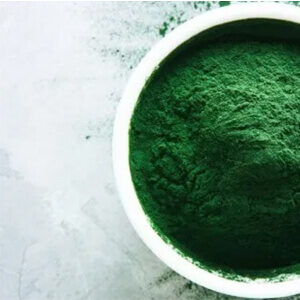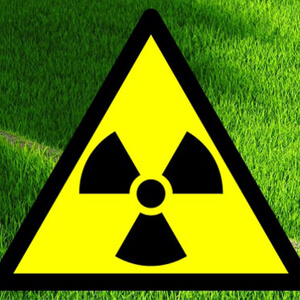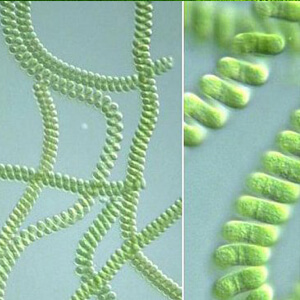The Potential Role of Spirulina in Protection against Radiation and its Effects Amha Belay, Ph. D. (March 17, 2011)
During the Chernobyl nuclear accident, and now due to the recent Japanese earthquake-related nuclear accident, many people have asked us about some reports that they have read about the effect of Spirulina in protection against radiation related health problems. These studies refer to those made in Belarus using Spirulina donated by Earthrise. This introductory article is to present what is known about the effect of Spirulina on radiation related effects as presented in the scientific literature. This article should not be used to diagnose, treat, cure or prevent any radiation related condition. Consumers should evaluate its use with their physician. In as much as Spirulina is a food, consumers may want to take it in addition to any other protection method advised by their physicians

Radiation Protection Effects of Spirulina

Researchers from Ukraine reported in 2000, in the journal, Lik Sprava, their study on the “adaptive potentials of those who worked in the cleanup of the aftermath of the accident at Chernobyl atomic electric power station under the influence of different methods”. They found that several drugs, phytochemicals and Spirulina lead to the reconditioning of several adaptive mechanisms, resulted in long lasting remissions and provided prophylactic activity and promoted work activity.
2. Radiation Protection in Bone Marrow and Blood Cells.
In a paper presented at the Second Asia-Pacific Conference on Algal Biotechnology in Malaysia in 1994, Chinese scientists reported a study on the effect of c-phycocyanin and polysaccharide extracts of Spirulina on peripheral blood and bone marrow progenitor cells in normal, gamma- irradiated and anemic mice. C-phycocyanin and polysaccharide of Spirulina were found to stimulate recovery of white blood cells and bone marrow cell counts. The anemic condition induced by irradiation was also reduced.4
3. Other Potential Beneficial Properties of Spirulina against Radiation Effects
The three most important and long-term effects of irradiation are:
a) compromised immune system,
b) oxidative stress and
c) cancer.
Numerous animal studies and some human clinical studies have shown that Spirulina modulates the immune system favorably and it has strong anti-oxidant and anti-inflammatory effects. Some studies have also shown its anti-cancer effects. These studies have been compiled in a recent book: Spirulina in Human Health and Nutrition8 and in an extensive review article published in the Journal of the American Nutraceutical Association. 9

In addition to the potential health benefits described above it is also a good source of protein, Vitamin A (as beta-carotene), iron, Vitamin B-12 and the rare essential fatty acid, gamma linolenic acid (GLA). It also contains a rich source of phycocyanin, a blue pigment with several potential health benefits.
4. Suggested Mechanism of Action
Some of the beneficial aspects of Spirulina in radiation effects may be due to its ability to bind to heavy metals and radioisotopes. In many studies the bulk of heavy metals are found in the protein fraction. This has led to the hypothesis that the high content of metallothioneins in Spirulina may be responsible for the accelerated excretion of radioisotopes and heavy metals. This heavy metal binding property has been shown to result in the reduction of heavy metal toxicities from mercury, lead and cadmium in animal studies and arsenic in a human clinical study. 8,9
5. Conclusion
The available evidence seems to indicate that Spirulina has a potential to be used as an adjunct to other means of radiation protection. Spirulina has been used for centuries as food. Spirulina produced by Earthrise has a GRAS (Generally Recognized as Safe) status by scientific procedures and FDA review.10 Spirulina is available in many health food stores and other outlets world-wide.
Interested? Shop our products!
References
- Loseva, L.P. & Dardynskaya. I.V. 1993. Spirulina natural sorbent of radionucleides. Research Institute of Radiation Medicine, Minsk, Belarus. Paper presented at the 6th International Congress of Applied Algology, Czech Republic.
- Loseva, L.P. 1999. Spirulina platensis and specialties to support detoxifying pollutants and to strengthen the immune system. Paper presented at the 8th International Congress on Applied Algology. Italy.
- Zozulia, I.S. & Iurchenko, A. V. 2000. The adaptive potential of those who worked in the cleanup of the aftermath of the accident at the Chernobyl Atomic Electric Power Station under the influence of different treatment methods. Lik Sprava Apr-Jun (3-4), 18-21.
- Zhang Cheng-Wu, Tseng Chao-Tsi & Zhang Yuan Zhen. 1994. The effect of polysaccharide and phycocyanin from Spirulina platensis var. on peripheral blood and hematopoietic system of bone marrow in mice. Paper presented at the 2nd Asia-Pacific Conference on Algal Biotechnology. Malaysia.
- Zhang Hong-Quin, Lin An-Ping, Sun Yun & Deng Yang-Mei. Chemo and radio-protective effects of polysaccharide of Spirulina platensis in hemopoeitic system of mice and dogs. Acta Pharmacol Sin. 22: 1121-1124.
- Quishen, P. Baojiang, G. & Kolman, A. 1989. Radio-protective effect of extract from Spirulina platensis in mouse bone marrow cells studied using the micronucleus test. Toxicol Letters. 48:165-169.
- Mazo V.K, Gmoshinskiĭ, I.V, Sokolova, A.G, Zorin, S.N, Danilina, L.L, Litvinova, A.V, & Radchenko, S.N. 1999. Effect of biologically active food additives containing autolysate of baker’s yeast and spirulina on intestinal permeability in an experiment. Vopr Pitan, 68:17-19.
- Belay, A. 2002. The potential application of Spirulina (Arthrospira) as a nutritional and therapeutic supplement in health management. JANA 5:27-49.
- Gershiwin, M.E. & Belay A. (eds.) 2008. Spirulina in human nutrition and health. CRC Press.
- http://www.fda.gov/Food/FoodIngredientsPackaging/GenerallyRecognizedasSafeGRAS/GRASListings/ucm153944.html

